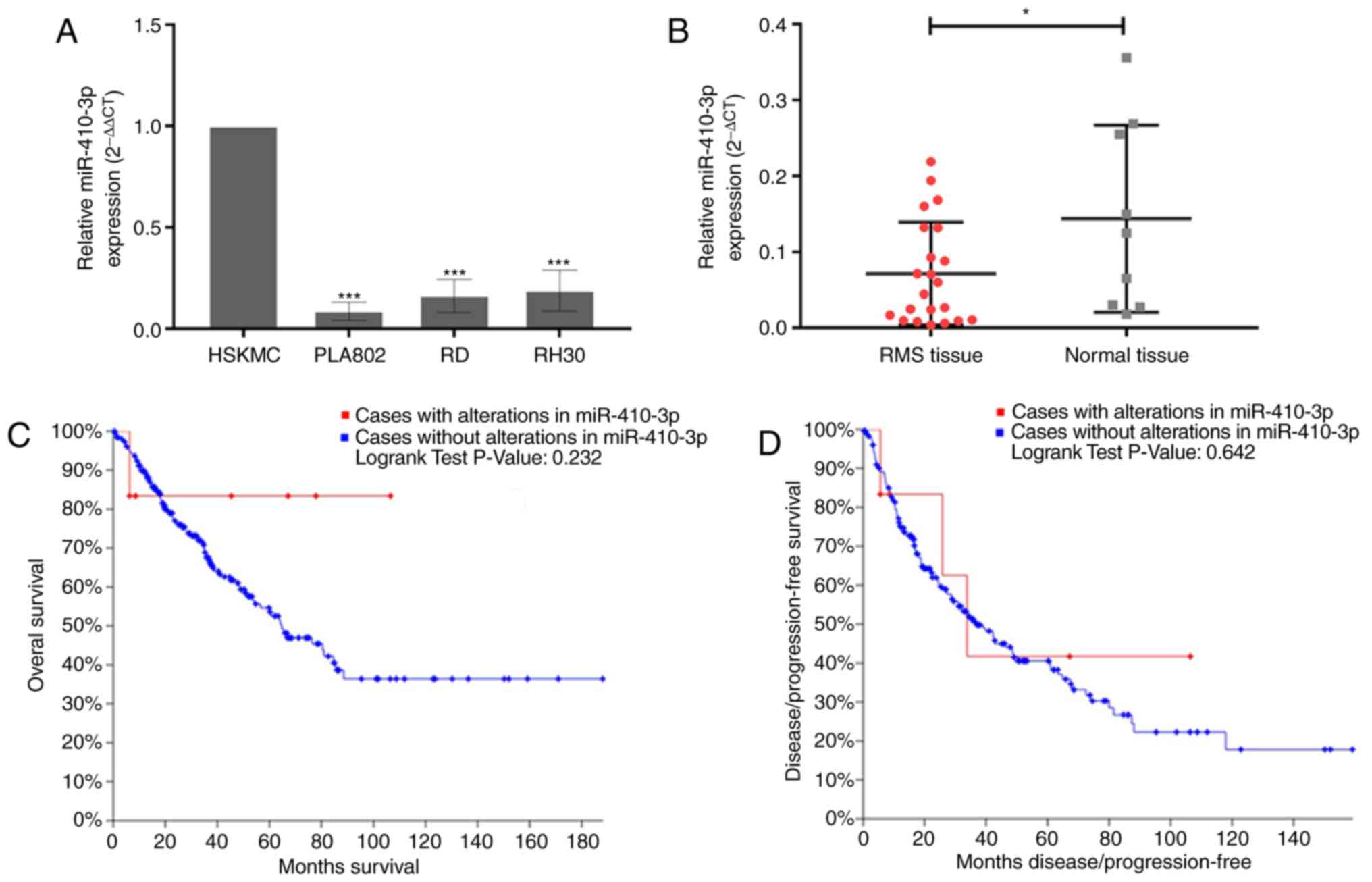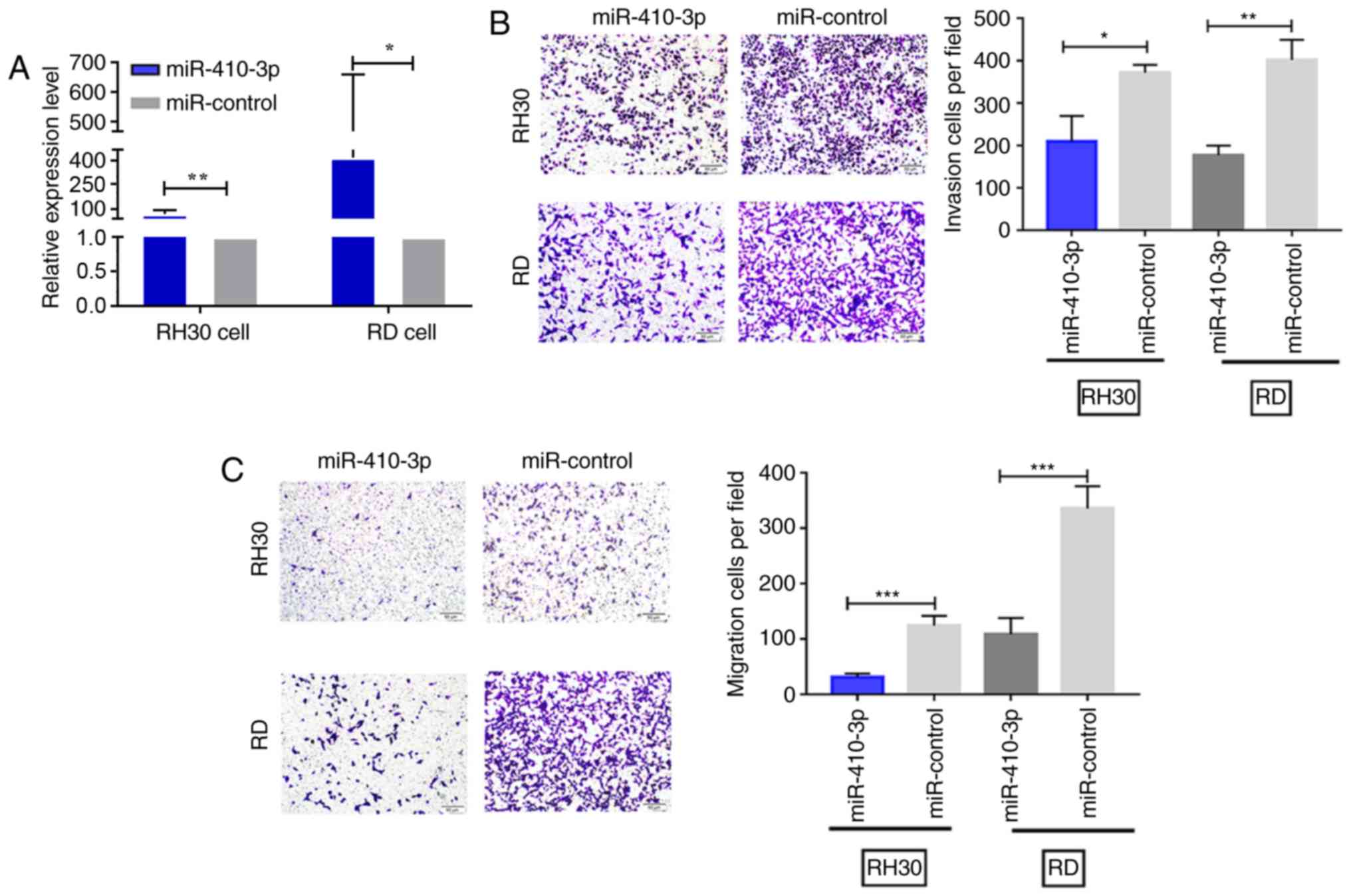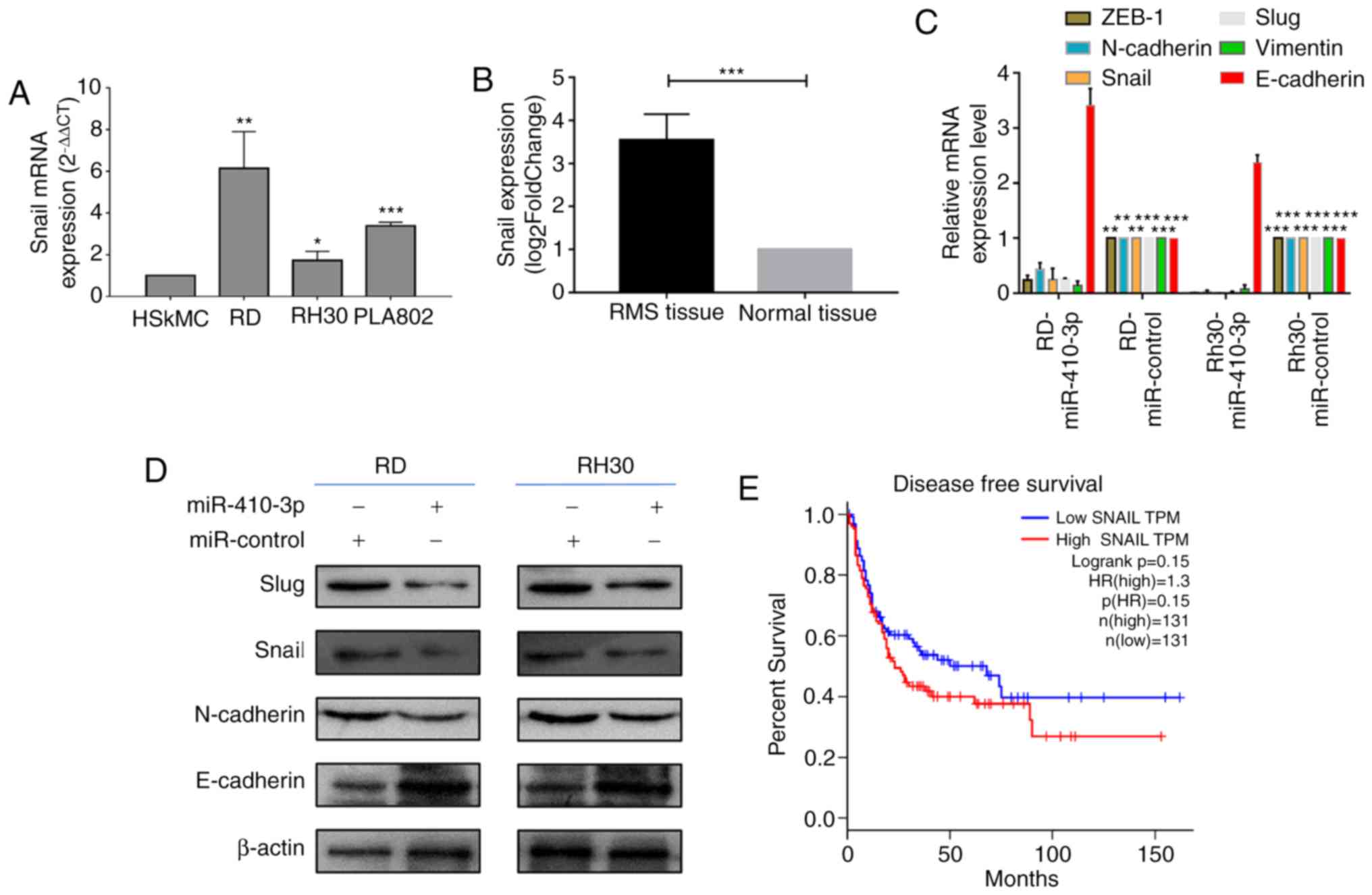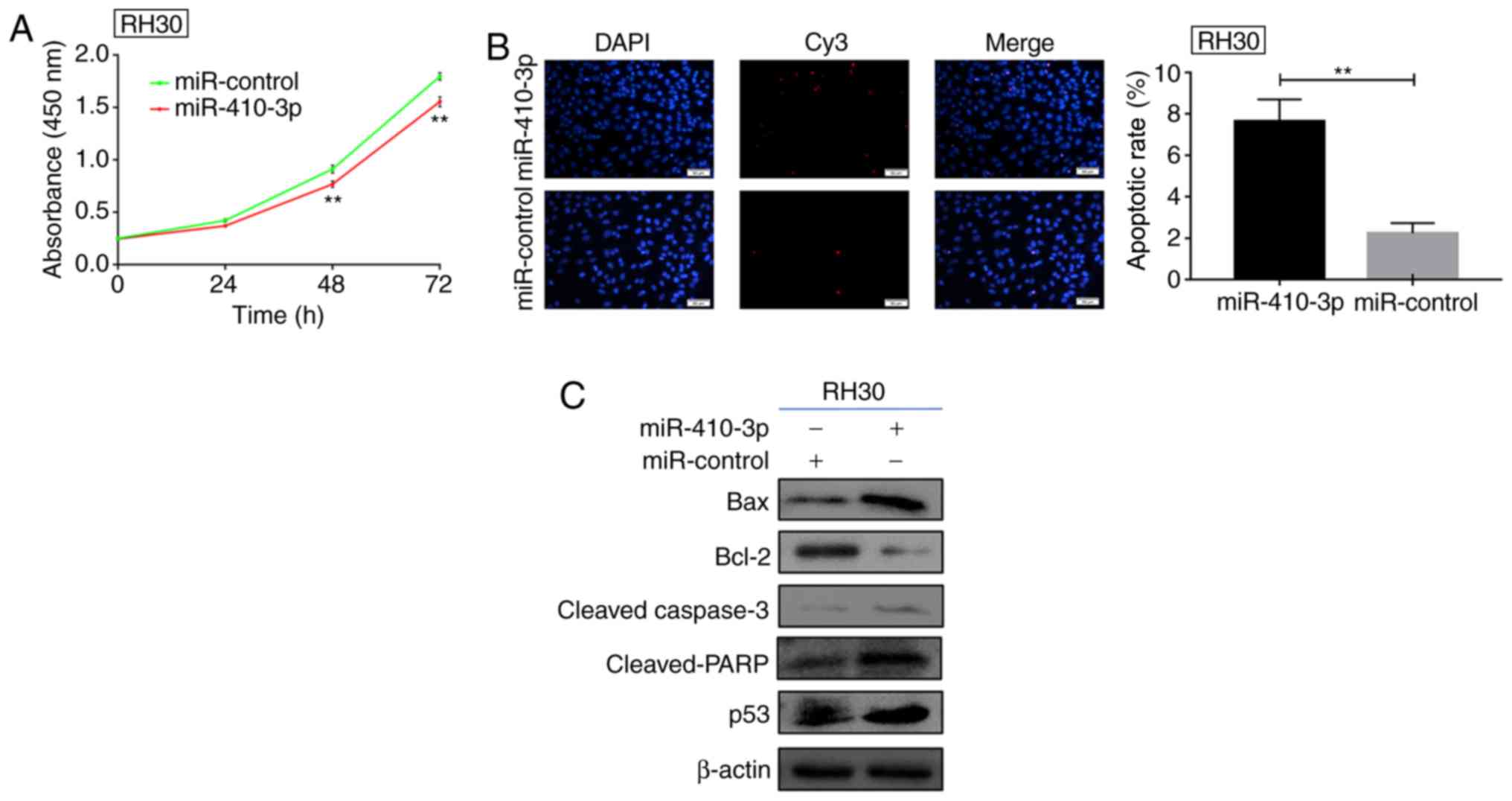|
1
|
Jo VY and Doyle LA: Refinements in sarcoma
classification in the current 2013 World Health Organization
classification of tumours of soft tissue and bone. Surg Oncol Clin
N Am. 25:621–643. 2016. View Article : Google Scholar : PubMed/NCBI
|
|
2
|
Toro JR, Travis LB, Wu HJ, Zhu K, Fletcher
CD and Devesa SS: Incidence patterns of soft tissue sarcomas,
regardless of primary site, in the surveillance, epidemiology and
end results program, 1978–2001: An analysis of 26,758 cases. Int J
Cancer. 119:2922–2930. 2006. View Article : Google Scholar : PubMed/NCBI
|
|
3
|
Pastore G, Peris-Bonet R, Carli M,
Martínez-García C, Sánchez de Toledo J and Steliarova-Foucher E:
Childhood soft tissue sarcomas incidence and survival in European
children (1978–1997): Report from the automated childhood cancer
information system project. Eur J Cancer. 42:2136–2149. 2006.
View Article : Google Scholar : PubMed/NCBI
|
|
4
|
Weihkopf T, Blettner M, Dantonello T, Jung
I, Klingebiel T, Koscielniak E, Lückel M, Spix C and Kaatsch P:
Incidence and time trends of soft tissue sarcomas in German
children 1985–2004-A report from the population-based German
Childhood Cancer Registry. Eur J Cancer. 44:432–440. 2008.
View Article : Google Scholar : PubMed/NCBI
|
|
5
|
Punyko JA, Mertens AC, Baker KS, Ness KK,
Robison LL and Gurney JG: Long-term survival probabilities for
childhood rhabdomyosarcoma. A population-based. Cancer.
103:1475–1483. 2005. View Article : Google Scholar : PubMed/NCBI
|
|
6
|
Sultan I, Qaddoumi I, Yaser S,
Rodriguez-Galindo C and Ferrari A: Comparing adult and pediatric
rhabdomyosarcoma in the surveillance, epidemiology and end results
program, 1973 to 2005: An analysis of 2,600 patients. J Clin Oncol.
27:3391–3397. 2009. View Article : Google Scholar : PubMed/NCBI
|
|
7
|
Kelly KM, Womer RB, Sorensen PH, Xiong QB
and Barr FG: Common and variant gene fusions predict distinct
clinical phenotypes in rhabdomyosarcoma. J Clin Oncol.
15:1831–1836. 1997. View Article : Google Scholar : PubMed/NCBI
|
|
8
|
Hron AJ and Asakura A: An examination of
the role of transcriptional and posttranscriptional regulation in
rhabdomyosarcoma. Stem Cells Int. 2017:24803752017. View Article : Google Scholar : PubMed/NCBI
|
|
9
|
Ambros V: The functions of animal
microRNAs. Nature. 431:350–355. 2004. View Article : Google Scholar : PubMed/NCBI
|
|
10
|
Bartel DP: MicroRNAs: Genomics,
biogenesis, mechanism, and function. Cell. 116:281–297. 2004.
View Article : Google Scholar : PubMed/NCBI
|
|
11
|
Rota R, Ciarapica R, Giordano A, Miele L
and Locatelli F: MicroRNAs in rhabdomyosarcoma: Pathogenetic
implications and translational potentiality. Mol Cancer.
10:1202011. View Article : Google Scholar : PubMed/NCBI
|
|
12
|
Chen X, Xiao W, Chen W, Luo L, Ye S and
Liu Y: The epigenetic modifier trichostatin A, a histone
deacetylase inhibitor, suppresses proliferation and
epithelial-mesenchymal transition of lens epithelial cells. Cell
Death Dis. 4:e8842013. View Article : Google Scholar : PubMed/NCBI
|
|
13
|
Huang Q, Gumireddy K, Schrier M, le Sage
C, Nagel R, Nair S, Egan DA, Li A, Huang G, Klein-Szanto AJ, et al:
The microRNAs miR-373 and miR-520c promote tumour invasion and
metastasis. Nat Cell Biol. 10:202–210. 2008. View Article : Google Scholar : PubMed/NCBI
|
|
14
|
Sarver AL, Li L and Subramanian S:
MicroRNA miR-183 functions as an oncogene by targeting the
transcription factor EGR1 and promoting tumor cell migration.
Cancer Res. 70:9570–9580. 2010. View Article : Google Scholar : PubMed/NCBI
|
|
15
|
Oh JS, Kim JJ, Byun JY and Kim IA:
Lin28-let7 modulates radiosensitivity of human cancer cells with
activation of K-Ras. Int J Radiat Oncol Biol Phys. 76:5–8. 2010.
View Article : Google Scholar : PubMed/NCBI
|
|
16
|
Liang YJ, Wang QY, Zhou CX, Yin QQ, He M,
Yu XT, Cao DX, Chen GQ, He JR and Zhao Q: MiR-124 targets Slug to
regulate epithelial-mesenchymal transition and metastasis of breast
cancer. Carcinogenesis. 34:713–722. 2013. View Article : Google Scholar : PubMed/NCBI
|
|
17
|
Eades G, Yao Y, Yang M, Zhang Y, Chumsri S
and Zhou Q: miR-200a regulates SIRT1 expression and epithelial to
mesenchymal transition (EMT)-like transformation in mammary
epithelial cells. J Biol Chem. 286:25992–26002. 2011. View Article : Google Scholar : PubMed/NCBI
|
|
18
|
Zhao D, Jia P, Wang W and Zhang G:
VEGF-mediated suppression of cell proliferation and invasion by
miR-410 in osteosarcoma. Mol Cell Biochem. 400:87–95. 2015.
View Article : Google Scholar : PubMed/NCBI
|
|
19
|
Guo R, Gu J, Zhang Z, Wang Y and Gu C:
MicroRNA-410 functions as a tumor suppressor by targeting
angiotensin II type 1 receptor in pancreatic cancer. IUBMB Life.
67:42–53. 2015. View
Article : Google Scholar : PubMed/NCBI
|
|
20
|
Zhang YF, Yu Y, Song WZ, Zhang RM, Jin S,
Bai JW, Kang HB, Wang X and Cao XC: miR-410-3p suppresses breast
cancer progression by targeting Snail. Oncol Rep. 36:480–486. 2016.
View Article : Google Scholar : PubMed/NCBI
|
|
21
|
Liu C, Zhang A, Cheng L and Gao Y: miR410
regulates apoptosis by targeting Bak1 in human colorectal cancer
cells. Mol Med Rep. 14:467–473. 2016. View Article : Google Scholar : PubMed/NCBI
|
|
22
|
Ye X, Jiang F, Li Y, Mu J, Si L, Wang X,
Ning S and Li Z: Retracted: Glabridin attenuates the migratory and
invasive capacity of breast cancer cells by activating
microRNA-200c. Cancer Sci. 105:875–882. 2014. View Article : Google Scholar : PubMed/NCBI
|
|
23
|
Li D, Yang Y, Zhu G, Liu X, Zhao M, Li X
and Yang Q: MicroRNA-410 promotes cell proliferation by targeting
BRD7 in non-small cell lung cancer. FEBS Lett. 589:2218–2223. 2015.
View Article : Google Scholar : PubMed/NCBI
|
|
24
|
Shen S, Huang K, Wu Y, Ma Y, Wang J, Qin F
and Ma J: A miR-135b-TAZ positive feedback loop promotes
epithelial-mesenchymal transition (EMT) and tumorigenesis in
osteosarcoma. Cancer Lett. 407:32–44. 2017. View Article : Google Scholar : PubMed/NCBI
|
|
25
|
Chen J, Yan D, Wu W, Zhu J, Ye W and Shu
Q: MicroRNA-130a promotes the metastasis and epithelial-mesenchymal
transition of osteosarcoma by targeting PTEN. Oncol Rep.
35:3285–3292. 2016. View Article : Google Scholar : PubMed/NCBI
|
|
26
|
Zhang X, Zheng L, Sun Y, Wang T and Wang
B: Tangeretin enhances radiosensitivity and inhibits the
radiation-induced epithelial-mesenchymal transition of gastric
cancer cells. Oncol Rep. 34:302–310. 2015. View Article : Google Scholar : PubMed/NCBI
|
|
27
|
Livak KJ and Schmittgen TD: Analysis of
relative gene expression data using real-time quantitative PCR and
the 2(-Delta Delta C(T)) method. Methods. 25:402–408. 2001.
View Article : Google Scholar : PubMed/NCBI
|
|
28
|
Zhu Y, Qiu P and Ji Y: TCGA-assembler:
Open-source software for retrieving and processing TCGA data. Nat
Methods. 11:599–600. 2014. View Article : Google Scholar : PubMed/NCBI
|
|
29
|
Tang Z, Li C, Kang B, Gao G, Li C and
Zhang Z: GEPIA: A web server for cancer and normal gene expression
profiling and interactive analyses. Nucleic Acids Res. 45:W98–W102.
2017. View Article : Google Scholar : PubMed/NCBI
|
|
30
|
Gao J, Aksoy BA, Dogrusoz U, Dresdner G,
Gross B, Sumer SO, Sun Y, Jacobsen A, Sinha R, Larsson E, et al:
Integrative analysis of complex cancer genomics and clinical
profiles using the cBioPortal. Sci Signal. 6:pl12013. View Article : Google Scholar : PubMed/NCBI
|
|
31
|
Grever MR, Schepartz SA and Chabner BA:
The National Cancer Institute: Cancer drug discovery and
development program. Semin Oncol 622–638. 1992.
|
|
32
|
Hayes MN, McCarthy K, Jin A, Oliveira ML,
Iyer S, Garcia SP, Sindiri S, Gryder B, Motala Z, Nielsen GP, et
al: Vangl2/RhoA signaling pathway regulates stem cell self-renewal
programs and growth in rhabdomyosarcoma. Cell Stem Cell.
22:414–427. 2018. View Article : Google Scholar : PubMed/NCBI
|
|
33
|
Love MI, Huber W and Anders S: Moderated
estimation of fold change and dispersion for RNA-seq data with
DESeq2. Genome Biol. 15:5502014. View Article : Google Scholar : PubMed/NCBI
|
|
34
|
Breneman JC, Lyden E, Pappo AS, Link MP,
Anderson JR, Parham DM, Qualman SJ, Wharam MD, Donaldson SS, Maurer
HM, et al: Prognostic factors and clinical outcomes in children and
adolescents with metastatic rhabdomyosarcoma-a report from the
Intergroup Rhabdomyosarcoma Study IV. J Clin Oncol. 21:78–84. 2003.
View Article : Google Scholar : PubMed/NCBI
|
|
35
|
Zhang B, Pan X, Cobb GP and Anderson TA:
microRNAs as oncogenes and tumor suppressors. Dev Biol. 302:1–12.
2007. View Article : Google Scholar : PubMed/NCBI
|
|
36
|
Palumbo T, Poultsides GA, Kouraklis G,
Liakakos T, Drakaki A, Peros G, Hatziapostolou M and Iliopoulos D:
A functional microRNA library screen reveals miR-410 as a novel
anti-apoptotic regulator of cholangiocarcinoma. BMC Cancer.
16:3532016. View Article : Google Scholar : PubMed/NCBI
|
|
37
|
Chen L, Zhang J, Feng Y, Li R, Sun X, Du
W, Piao X, Wang H, Yang D, Sun Y, et al: MiR-410 regulates MET to
influence the proliferation and invasion of glioma. Int J Biochem
Cell Biol. 44:1711–1717. 2012. View Article : Google Scholar : PubMed/NCBI
|
|
38
|
Yang J and Weinberg RA:
Epithelial-mesenchymal transition: At the crossroads of development
and tumor metastasis. Dev Cell. 14:818–829. 2008. View Article : Google Scholar : PubMed/NCBI
|
|
39
|
Yilmaz M and Christofori G: EMT, the
cytoskeleton, and cancer cell invasion. Cancer Metastasis Rev.
28:15–33. 2009. View Article : Google Scholar : PubMed/NCBI
|
|
40
|
Gavert N and Ben-Ze'ev A:
Epithelial-mesenchymal transition and the invasive potential of
tumors. Trends Mol Med. 14:199–209. 2008. View Article : Google Scholar : PubMed/NCBI
|
|
41
|
Somarelli JA, Shetler S, Jolly MK, Wang X,
Bartholf Dewitt S, Hish AJ, Gilja S, Eward WC, Ware KE, Levine H,
et al: Mesenchymal-Epithelial transition in sarcomas is controlled
by the combinatorial expression of MicroRNA 200s and GRHL2. Mol
Cell Biol. 36:2503–2513. 2016. View Article : Google Scholar : PubMed/NCBI
|
|
42
|
Alba-Castellón L, Batlle R, Francí C,
Fernández-Aceñero MJ, Mazzolini R, Peña R, Loubat J, Alameda F,
Rodríguez R, Curto J, et al: Snail1 expression is required for
sarcomagenesis. Neoplasia. 16:413–421. 2014. View Article : Google Scholar : PubMed/NCBI
|
|
43
|
Shen A, Zhang Y, Yang H, Xu R and Huang G:
Overexpression of ZEB1 relates to metastasis and invasion in
osteosarcoma. J Surg Oncol. 105:830–834. 2012. View Article : Google Scholar : PubMed/NCBI
|
|
44
|
Baum B, Settleman J and Quinlan MP:
Transitions between epithelial and mesenchymal states in
development and disease. Semin Cell Dev Biol. 19:294–308. 2008.
View Article : Google Scholar : PubMed/NCBI
|
|
45
|
Yoshida T, Ozawa Y, Kimura T, Sato Y,
Kuznetsov G, Xu S, Uesugi M, Agoulnik S, Taylor N, Funahashi Y and
Matsui J: Eribulin mesilate suppresses experimental metastasis of
breast cancer cells by reversing phenotype from
epithelial-mesenchymal transition (EMT) to mesenchymal-epithelial
transition (MET) states. Br J Cancer. 110:1497–1505. 2014.
View Article : Google Scholar : PubMed/NCBI
|
|
46
|
Tombolan L, Zampini M, Casara S, Boldrin
E, Zin A, Bisogno G, Rosolen A, De Pittà C and Lanfranchi G:
MicroRNA-27a contributes to rhabdomyosarcoma cell proliferation by
suppressing RARA and RXRA. PLoS One. 10:e01251712015. View Article : Google Scholar : PubMed/NCBI
|
|
47
|
Coda DM, Lingua MF, Morena D, Foglizzo V,
Bersani F, Ala U, Ponzetto C and Taulli R: SMYD1 and G6PD
modulation are critical events for miR-206-mediated differentiation
of rhabdomyosarcoma. Cell Cycle. 14:1389–1402. 2015. View Article : Google Scholar : PubMed/NCBI
|
|
48
|
Sarver AL, Li L and Subramanian S:
MicroRNA miR-183 functions as an oncogene by targeting the
transcription factor EGR1 and promoting tumor cell migration.
Cancer Res. 70:9570–9580. 2010. View Article : Google Scholar : PubMed/NCBI
|
|
49
|
Bartel DP: MicroRNAs: Target recognition
and regulatory functions. Cell. 136:215–233. 2009. View Article : Google Scholar : PubMed/NCBI
|













